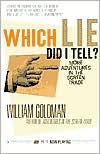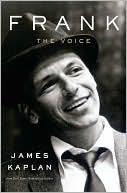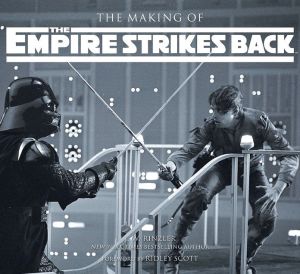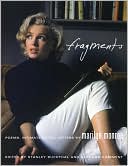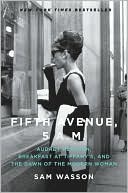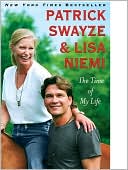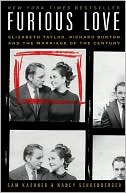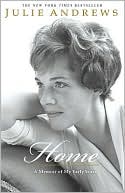Which Lie Did I Tell?: More Adventures in the Screen Trade
Wiliam Goldman is one of the most successful screenwriters of the past forty years. His book Adventures in the Screen Trade—the tell-all that revealed the secrets behind the business of the big Hollywood screen—is a classic, the bible for anyone who wants to be a screenwriter or wants the inside scoop on Hollywood. Now, with his fascinating sequel—Which Lie Did I Tell?: More Adventures in the Screen Trade—Goldman brings us up to speed, with the latest lowdown on Hollywood moviemaking.\ In...
Search in google:
Wiliam Goldman is one of the most successful screenwriters of the past forty years. His book Adventures in the Screen Trade—the tell-all that revealed the secrets behind the business of the big Hollywood screen—is a classic, the bible for anyone who wants to be a screenwriter or wants the inside scoop on Hollywood. Now, with his fascinating sequel—Which Lie Did I Tell?: More Adventures in the Screen Trade—Goldman brings us up to speed, with the latest lowdown on Hollywood moviemaking.In Which Lie Did I Tell?, Goldman details his experiences—good, bad, and ugly—over the past fifteen years. He gives us gossipy, terrifying, hilarious, and insightful stories from the set of such films as The Princess Bride, Misery, Maverick, and Absolute Power. He fills us in on what it's like to work with Mel Gibson, Kathy Bates, Michael Douglas, Clint Eastwood, and many other Hollywood players. He tells us what does and doesn't work on film and why, conducting a virtual writer's clinic on classic moments in great screenplays, among them the crop-dusting scene in North by Northwest and the zipper scene in There's Something About Mary. Finally, Goldman brings together some of today's top screenwriters to analyze and doctor a screenplay he created specifically for this book—it's called The Big A, and Goldman made headlines in Los Angeles with it, as The Big A was the first screenplay he had auctioned since Butch Cassidy and the Sundance Kid.Goldman enlightens and entertains, sharing his invaluable expertise and great behind-the-scenes anecdotes. Which Lie Did I Tell? is destined to follow its predecessor as the definitive guide to the nuts and bolts behind the glitzy facade of contemporary Hollywood film.About the Author:William Goldman has won three Lifetime Achievement awards for screenwriting, two Screenwriter of the Year awards, two Academy Awards (for Butch Cassidy and the Sundance Kid and All the President's Men) and one English Academy Award. He is the author of the novels The Princess Bride and Marathon Man, which has made him famous in dentists' offices around the world. He lives in New York City. Variety - Peter Bart People in the industry love to quote Bill Goldman's line that "nobody knows anything," but in fact, Goldman knows a great deal about storytelling and filmmaking and he superbly sets forth this wisdom in his latest book.
The Leper\ [1980-85]\ I don't think I was aware of it, but when I started work on Adventures in the Screen Trade, in 1980, I had become a leper in Hollywood.\ Let me explain what that means: the phone stopped ringing.\ For five years, from 1980 till 1985, no one called with anything resembling a job offer. Sure, I had conversations with acquaintances. Yes, the people whom I knew and liked still talked to me. Nothing personal was altered in any way.\ But in the eight years prior to 1978, seven movies I'd written were released. In the eight years following, none.\ I talked about it recently with a bunch of young Los Angeles screenwriters, and what I told them was this: If I had been living Out There, I don't think I could have survived. The idea of going into restaurants and knowing that heads were turning away, of knowing people were saying "See him?--no, don't look yet, okay, now turn, that guy, he used to be hot, can't get arrested anymore," would have devastated me. In L.A., truly, there is but one occupation, the movie business. In New York, the infinite city, we're all invisible.\ Example: my favorite French bistro is Quatorze Bis, on East Seventy-ninth. Best fries in town, great chicken, all that good stuff. Well, I was there one night last year when another guy came in, and we had each won two Oscars for screenwriting, and we lived within a few blocks of each other--\ --and we had never met. (It was Robert Benton.)\ Impossible in Los Angeles. But that kind of thing was my blessing during those five years.\ My memory was that the leprosy didn't really bother me. I asked my wonderful ex-wife, Ilene, about it and she said: "I don't think it did bother you, not being out of Hollywood, anyway. But one night I remember you were in the library and you were depressed and I realized it was the being alone that was getting to you. You always enjoyed the meetings, the socialness of moviemaking. You were always so grateful when you could get out of your pit."\ I wrote five books in those five years (couldn't do it now, way too hard) and then the phone started ringing again.\ This is why it stopped in the first place.\ There is a famous and amazingly racist World War I cartoon that showed two soldiers fighting in a trench. One was German, the other an American Negro who had just swiped at the German's throat with his straight razor. (When I say racist, I mean racist.) The caption went like this:\ German Soldier: You missed.\ American Soldier: Wait'll yo' turn yo' head.\ The point being, in terms of my screenwriting career, I never turned my head. Looking back, there was no real reason to. I was on my hot streak then. I was a Good Housekeeping Seal of Approval in those years. Between '73 and '78 this is what I wrote:\ Three novels:\ The Princess Bride (1973)\ Marathon Man (1974)\ Magic (1976)\ And six movies:\ The Great Waldo Pepper (1975)\ The Stepford Wives (1975)\ All the President's Men (1976)\ Marathon Man (1976)\ A Bridge Too Far (1977)\ Magic (1978)\ If you had told me, that 1978 November day when Magic opened, that it would be nine years before my next picture appeared, I doubt I would have known what language you were speaking.\ It wasn't as if I'd stopped writing screenplays after Magic. But the lesson I was about to learn was this: studios do not particularly lose faith in a writer if a movie is terrible. Producers do not forget your name if a movie loses lots of money. Because most studio movies lose lots of money (they survive on their hits). If, say, they chose directors who had only hits, they would be choosing from a practically nonexistent list. All anybody wants, when they hire you, is this: that the movie happen.\ The change came after A Bridge Too Far.\ Joseph E. Levine, the producer of that film, thought of me as a kind of good luck talisman. His career was not exactly rocketing the years before Bridge, and when that movie brought him back close to the fire, he attributed a lot of it to me. And he wanted to go into business with me. He bought my novel Magic, made that movie, and then proposed a three-picture deal: I would write three original screenplays for him, pretty much of my own choosing. I had never signed a multiple deal before, never thought I would. But I jumped at it. The work experiences with him had been so decent, unlike a lot of the standard Hollywood shit we all put up with.\ One thing that made Mr. Levine unique was that he was the bank. He made his movies with his own money, took no studio deals until late in the game, when he had something to show. He was gambling that he would find movie studios who would want to buy, and he had gotten rich that way. Bridge had cost him $22 million. An insane gamble in today's world, nuttier back then. But the day it opened it was $4 million in profit. Mr. Levine sold the movie everywhere, Europe, Asia, country by country, territory by territory; he had collected $26 million by opening day.\ Typical of his bravery was one day when he was in a hospital in New York after surgery. I was visiting him, and the director, Richard Attenborough, called from Holland. They were shooting the crucial parachute drop, and the weather had been dreadful. The parachutists were willing to work the next day, a Saturday.\ Attenborough requested that extra day. It would cost Levine seventy-five thousand of his own dollars. Levine screamed at Attenborough for even suggesting such a thing. Attenborough repeated his request. Levine asked if he had sufficient footage for the sequence as it was. Attenborough said he had more than enough but it was all drab-looking. Levine screamed at him again. It was a ridiculous request. Attenborough held tough, saying the extra day might make all the difference. Levine then asked what was the weather report for Saturday. Attenborough admitted it was for more of the same: dreary.\ Now Levine really let fly. You limey bastard, on and on, and he finally hung up on Attenborough. But not before he agreed to the extra day. The weather turned glorious and almost the entire wonderful drop sequence comes from that extra day.\ Try getting a studio to do that.\ So the fact that Mr. Levine did not need studio backing, that he cared not at all for studio money or thinking, was a huge factor in my agreeing to the three-picture deal.\ It turned out to be a huge contributor to my downfall.\ The Sea Kings was the first of the three-picture deal. A pirate flick. Came from a great snippet of material. In the early 1700s, the most famous, and most lethal, pirate was Blackbeard. At the same time, living on the island of Barbados, was a fabulously wealthy planter, Stede Bonnet.\ Bonnet had been a soldier but had never seen action. He had a monstrous wife. Had almost died the previous winter. And, in a feat of great lunacy unmatched just about anywhere on earth, Bonnet decided to become a pirate. He commissioned a ship--the only such one in history, by the way. Pirate ships were always stolen.\ So off he sailed.\ And met, for a blink, Blackbeard.\ They did not sail together for very long, but the idea of these two strange and remarkable men knocked me out. So I wrote The Sea Kings about them. (Butch and Sundance on the high seas, if you will.)\ The decision that I made was this: Bonnet, rich beyond counting and miserably unhappy, a student of piracy, wanted one thing more than any other: an adventure-filled life (and if that included death, so be it). Blackbeard was sick up to here with his adventure-filled life. Piracy was getting tougher and tougher, and he was broke, as all pirates (save Bonnet) were. What he wanted was a long, comfortable life and a sweet death in bed.\ So I wrote a movie about two men who were each other's dream.\ It was filled with action and blood and double crosses and I hoped a decent amount of laughter. When I was done, I gave it to Mr. Levine.\ Who just loved it.\ The Year of the Comet was my second original, a romantic thriller, about a chase for the world's greatest bottle of wine, and you can read all about it in the chapter with its name on it. I will add only this here--\ --Mr. Levine loved it too.\ I wrote the part of Blackbeard for Sean Connery, and Mr. Levine got the idea of casting the two James Bonds, having Roger Moore play the more elegant Bonnet. Another casting notion was the two Moores: Dudley (10 had happened) as Bonnet, Roger shifting over to Blackbeard.\ In the wine movie, he wanted Robert Redford in the Cary Grant part.\ Obviously, you did not see these movies.\ What happened?\ When Mr. Levine had come to me for A Bridge Too Far, he was pushing seventy, and he hated being out of the loop, was willing to take almost any gamble. Now that Bridge and Magic had helped restore him, his needs were lessened.\ He was also older now.\ But most critical: the price of movies had begun to skyrocket. So the fact that he was his own bank, so wonderful earlier, was now a huge problem--he was rich, but not that rich. Some research was done on the cost of constructing that everyday little item, the pirate ship.\ You don't want to know.\ Stars' salaries.\ You don't want to know.\ He had chances to lay the scripts off to studios but he couldn't do that, y'see, because then he'd be just like everybody else, taking shit from the executives. When he was the bank, he gave shit. I heard him blow studio heads out of the water. I saw him sit at his desk, smiling at me, while he hurled the most amazing insults at these Hollywood powers--\ --and they had to take it--\ --because he had movies they wanted.\ That was the fucking staff of life for the old man. His ego would not allow him to be just like everybody else. He didn't need it.\ So both scripts just lay there. (They very well may have been unusable scripts--always a very real possibility when I go to work--but that was not the governing principle here.) I never wrote the third original--Mr. Levine and I parted company.\ I was O for two.\ The Ski Bum began as an article in Esquire by Jean Vallely. Briefly, it concerned a ski instructor in Aspen who led a very glamorous life. Wealthy and famous clients, the kind of romantic existence most of us only moon about.\ That's by day.\ By night he was aging, broke, scraping along in a trailer with a wife and little kid.\ I thought it would make a terrific movie.\ The producer had bought the underlying rights. I signed on, went to Aspen, noodled around, did my research, went to work on the screenplay. Got it to the producer and the studio, Universal.\ The producer loved it.\ Alas, Universal's studio head hated it. When the producer left for another studio, he asked to buy it back, take it with him. Universal said, no conceivable way. We hate this piece of shit and we are going to keep it forever, thank you very much.\ I always thought that was strange. If you hate something so much and you're offered a fair price to unload it, why keep it around? I did know, of course, the most usual reason--fear of humiliation. What if a studio gives up a piece of material that turns into Home Alone (happened) or E.T. (happened)?\ But this was all company stuff, taking place far far above my head.\ Dissolve, as they say (they really do), Out There.\ It's a couple of years later and another executive has come to power at Universal. The guy who hated it so much is still above him, but this secondary power likes the screenplay and wants to see the movie made. We met and his first words to me were these: "You don't have the least idea what happened, do you?"\ I didn't then.\ I do now.\ The producer had been, at the time, relatively new in the picture business. But he was a gigantic figure in the music business: Name a superstar singer, he handled him.\ Well, Universal owned an amphitheater and needed talent to fill it. So the very great Lew Wasserman made a deal personally with the producer to handle the amphitheater and also have a movie-producing deal. Anything he wanted to make was an automatic "go."\ With one teensy proviso: it had to cost less than an agreed-upon amount. Anything that cost more, Ned Tanen, the head of Universal Pictures, would have to agree to.\ The Ski Bum, which needed stars and snow and all kinds of other expensive stuff, obviously needed Tanen's okay.\ This presented kind of a problem for the picture because, decades ago, Tanen and my guy had been together in the mailroom at William Morris, where so many great careers were launched.\ And they had hated each other with a growing passion since then.\ Not only that, Tanen was pissed that the producer had gotten a movie deal at his company by going over his head to Wasserman.\ So there it was.\ Tanen, of course, rejected it. And, of course, rejected any attempt to buy the screenplay back.\ The new executive and I tried an end run. Tanen never budged.\ O for three.\ The Right Stuff came next. A ghastly and depressing saga (recounted in magnificent detail in Adventures in the Screen Trade, so I won't repeat it here). I left the project angry and frustrated. These were bad times in America--the hostages had just been taken in Iran--so I had wanted to write a movie that might have a patriotic feel. The director wanted something else.\ O for four.\ On Wings of Eagles was not called that when I got involved. The famous Ken Follett book and the miniseries were still in the future.\ But Ross Perot, who controlled the material, was interested in mak-ing a movie about the wonderful time when he masterminded breaking his employees out of an Iranian prison. I still had my patriotic need. I signed on.\ The problem with this material was always very simple: it was an expensive action film but the star, the main guy, Perot's hero, "Bull" Simons, was not a young man. And Perot would never have betrayed the basic reality by allowing a younger man to do it.\ There was only Eastwood. Had to be Eastwood. No one else but Eastwood. Dead in the water without Eastwood.\ He took another military adventure movie, Firefox.\ I was the one dead in the water now.\ Until late in 1986, when the telephone rang . . .\ From the Hardcover edition.
IntroductionixI.More Adventures1The Leper [1980-85]3Memoirs of an Invisible Man [1986]10The Princess Bride [1987]22Misery [1990]37The Year of the Comet (Alas) [1992]50Maverick [1994]59The Ghost and the Darkness [1996]72Absolute Power [1997]97II.Heffalumps!!!129There's Something About Mary139When Harry Met Sally153North by Northwest164The Seventh Seal186Chinatown and Fargo211Butch Cassidy and the Sundance Kid238III.Stories277Story 1The Old Guy282Story 2The Good Guy296Story 3The Mastermind310Story 4The Dolphin319IV.The Big A335Index463Permissions Acknowledgments487
\ Peter BartPeople in the industry love to quote Bill Goldman's line that "nobody knows anything," but in fact, Goldman knows a great deal about storytelling and filmmaking and he superbly sets forth this wisdom in his latest book.\ — Variety\ \ \ \ \ Publishers Weekly - Publisher's Weekly\ Two-time Oscar-winning screenwriter Goldman follows up his irreverent, gossipy and indispensable screenwriting bible, Adventures in the Screen Trade (1983), with this equally wise, tart and very funny account of the filmmaking process. He begins with the surprising admission that he was a "leper" in Hollywood between 1980 and 1985: after Magic (1978), he was unable to get any screenplays produced until The Princess Bride (1987). (Moviegoers' loss was readers' gain: during those years he wrote six novels.) Wildly opinionated ("Vertigo--for me, the most overrated movie of all time") but astute, Goldman is a 35-year industry veteran with lots of tales and a knack for spinning them. He knows how to captivate his audience, peppering his philosophical advice with star-studded anecdotes. Whether he's detailing why virtually every leading actor turned down the lead in Misery before James Caan offered to be drug-tested to get the part, or how Michael Douglas was the perfect producer but the wrong actor for The Ghost and the Darkness, Goldman offers keen observations in a chatty style. In the last section of the book, he gamely offers readers a rough first draft of an original screenplay. Even more bravely, he includes instructive, intuitive and sometimes scathing critiques by fellow screenwriters, including Peter and Bobby Farrelly (There's Something About Mary), Callie Khouri (Thelma & Louise) and John Patrick Shanley (Moonstruck). Movie buffs of all stripes, even those with no interest in writing for the screen, will enjoy this sublimely entertaining adventure. (Mar.) Copyright 2000 Cahners Business Information.\|\ \ \ Library JournalA famed screenwriter (Butch Cassidy and the Sundance Kid, All the President's Men) and novelist (Boys and Girls Together), Goldman follows up Adventures in the Screen Trade (LJ 5/15/83) by ruminating on his own more recent efforts (The Princess Bride, Misery, Maverick, The Ghost and the Darkness, and Absolute Power) as well as past and present cinema. He discusses screenwriting perils, explains how successful movies like Charade and The Sound of Music wreaked havoc by siring copycat films, describes how Andre the Giant always paid for lunch, complains that MTV's impact on quick-cutting has helped make 1990s films awful, reveals that only Clint Eastwood and Sean Connery are tall, investigates how great comedy scenes worked in When Harry Met Sally and There's Something About Mary, debunks auteurs, and divulges why no big star would play Superman in 1978. How can you not admire a writer who consistently pictures Cary Grant and Jean Simmons as his protagonists and argues that Gunga Din is the best movie ever made? An engaging expos that is not mean-spirited; recommended for public and academic libraries and film collections.--Kim R. Holston, American Inst. for Chartered Property Casualty Underwriters, Malvern, PA Copyright 2000 Cahners Business Information.\\\ \ \ \ \ School Library JournalYA-In this sequel to Adventures in the Screen Trade (Warner, 1989), Goldman instructs his audience in the art and industry of screenwriting and filmmaking, while regaling them with stories from his career. From The Memoirs of an Invisible Man to Absolute Power, this master storyteller explains his role and his thought processes for each film, at the same time delivering an exposition on how stories are written and films are made. Sprinkled throughout is his advice for future screenwriters. In the second section, he analyzes classic film sequences, setting each scene, quoting excerpts from the screenplays, and then explaining what made them great. Finally, the author offers story ideas and examines their potential for the big screen. Students of films will find this book entertaining and informative.-Jane S. Drabkin, Potomac Community Library, Woodbridge, VA Copyright 2000 Cahners Business Information.\|\ \ \ \ \ Jean FreberThis is a leisurely and perceptive look at movies and scripts and how they happen from a master of the trade. \ —The Los Angeles Times\ \ \ \ \ Sophie CottrellMarch 2000\ William Goldman is one of the most successful screenwriters of the past 40 years. His book Adventures in the Screen Trade (1983) -- the tell-all that revealed the secrets behind the business of the Hollywood movie world -- is now a classic, the bible for anyone who wants to be a screenwriter or wants the inside scoop on Tinseltown. Now, with his fascinating sequel, Which Lie Did I Tell?, Goldman brings us up to speed, with the latest lowdown on Hollywood moviemaking.\ In Which Lie Did I Tell? Goldman details his experiences -- good, bad, ugly -- over the past 15 years. He gives us gossipy, terrifying, hilarious, and insightful stories from the sets of such films as "The Princess Bride," "Misery," "Maverick," and "Absolute Power." He fills us in on what it's like to work with Mel Gibson, Kathy Bates, Michael Douglas, Clint Eastwood, and many other Hollywood players. He tells us what does and doesn't work on film and why, conducting a virtual writer's clinic on classic moments in great screenplays, among them the crop-dusting scene in "North by Northwest" and the zipper scene in "There's Something About Mary." Finally, Goldman brings together some of today's top screenwriters to analyze and doctor a screenplay he created specifically for this book -- it's called "The Big A," and Goldman recently made headlines in Los Angeles with it, as it was the first screenplay he had auctioned since "Butch Cassidy and the Sundance Kid."\ Goldman enlightens and entertains, sharing his invaluable expertise and great behind-the-scenes anecdotes. Which Lie Did I Tell? is destined to follow its predecessor as the definitive guide to the nuts and bolts behind the glitzy facade of contemporary Hollywood.\ --Sophie Cottrell\ \ \
